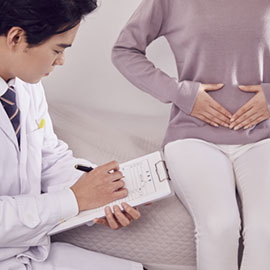All About Cervical Cancer Dr. Ha Joong-gyu, Professor of Obstetrics and Gynecology at Daejeon Eulji Medical Center, Eulji University

Cervical cancer can occur in any women who have ever had sex. It was typically found in pre- or postmenopausal women in their 40s and 50s, but more recently, it is becoming more common in younger women. Let’s learn more from Dr. Ha Joong-gyu, Professor of Obstetrics and Gynecology at Daejeon Eulji Medical Center, Eulji University.



 Interview With
Interview With
 Medical Technology
Medical Technology
 City & Culture
City & Culture
 Food & Travel
Food & Travel
 Hot Issue
Hot Issue
 Health & Wellness
Health & Wellness